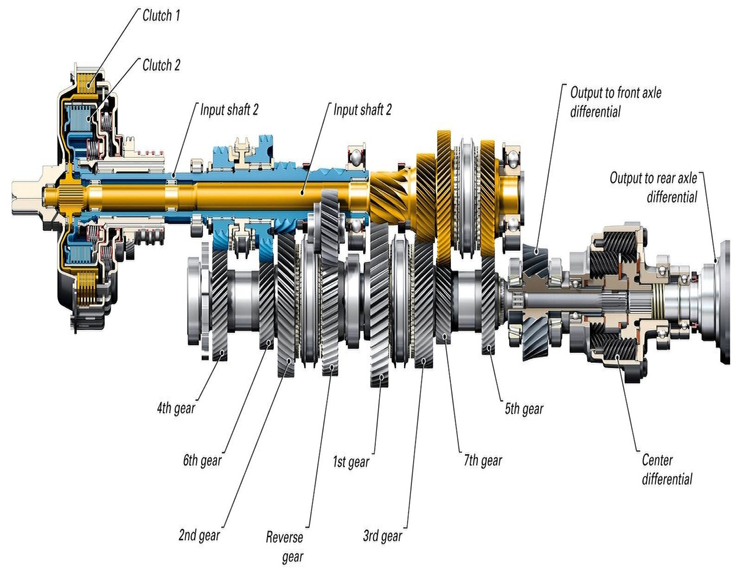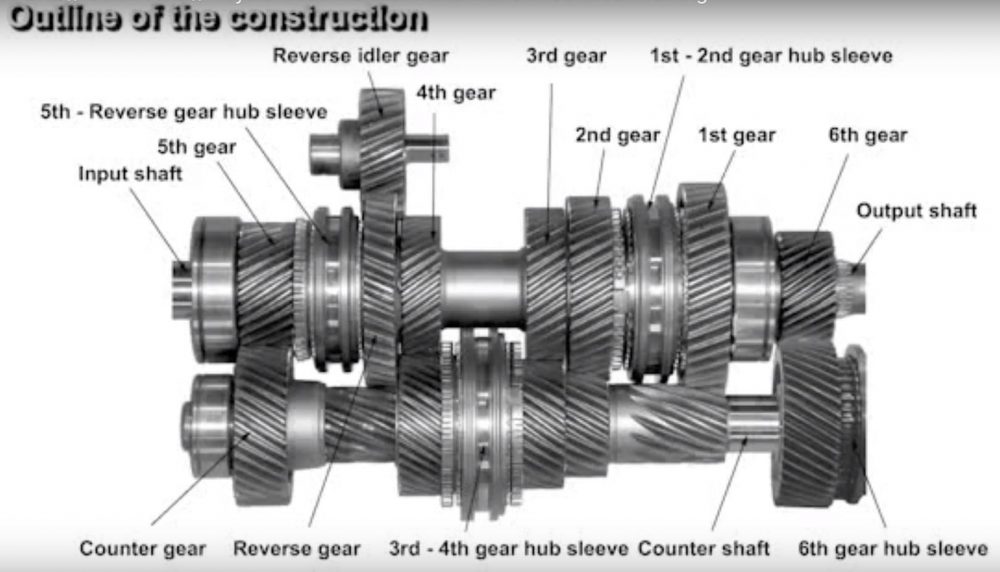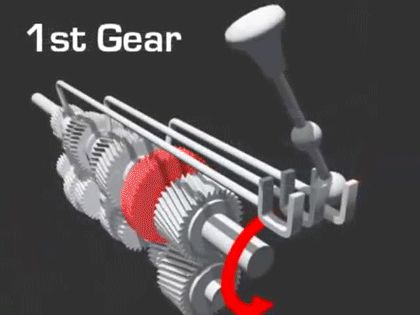Understanding the Complexities of Manual Transmission
Manual transmission is a crucial component in vehicles, allowing drivers to have greater control over their speed and acceleration. However, its intricate mechanisms can be overwhelming for those who are not familiar with its inner workings. In this article, we will delve into the various parts and functions of manual transmissions, providing a comprehensive overview for those seeking to enhance their understanding of this essential automotive system. By exploring the key components and their roles, readers will gain a deeper appreciation for the complexity and precision required to operate a manual transmission effectively.
Key Components and Functions
At the heart of a manual transmission lies the clutch, which serves as the primary interface between the engine and the gears. The clutch is responsible for disengaging the engine from the transmission, allowing the driver to shift gears smoothly. The gears themselves are arranged in a specific pattern, with the input shaft connected to the engine and the output shaft connected to the wheels. The synchronizers, located between the gears, ensure that the gears engage and disengage smoothly, preventing any jarring or grinding sensations. By understanding these key components and their functions, drivers can better appreciate the intricate dance of gears and mechanisms that enable manual transmissions to function efficiently.
what are the key components of a manual transmission system
 The key components of a manual transmission system include:
The key components of a manual transmission system include:
Clutch: The clutch is responsible for disengaging the engine from the transmission, allowing the driver to shift gears smoothly. It consists of several components such as the clutch pedal, clutch master cylinder, release fork, actuator cylinder, release bearing, and clutch cover.
Gearbox: The gearbox, also known as the transmission, contains the gears that are shifted by the driver to control the speed of the vehicle. It is connected to the clutch and the drive shaft.
Drive Shaft or Propeller Shaft: The drive shaft or propeller shaft transmits the power from the gearbox to the wheels. It is supported by universal joints and the rear axle.
Universal Joints: Universal joints are used to connect the drive shaft to the wheels, allowing for flexibility and smooth power transmission.
Rear Axle: The rear axle is the final component that connects the drive shaft to the wheels, ensuring the power is transmitted efficiently.
Shift Fork and Shift Rod: The shift fork and shift rod are used to connect the clutch to the gearbox, allowing the driver to shift gears.
Hydraulic System: The hydraulic system is used to transmit the pressure generated by the clutch pedal to the clutch master cylinder, which then engages and disengages the clutch.
Pressure Plate and Clutch Plate: The pressure plate and clutch plate work together to engage and disengage the clutch, allowing the driver to shift gears smoothly.
These components work together to enable the driver to control the speed and acceleration of the vehicle through manual gear shifting.
what is the function of the clutch in a manual transmission system
 The function of the clutch in a manual transmission system is to temporarily disconnect the engine from the transmission, allowing the driver to shift gears smoothly without disrupting the engine’s operation. This disconnection enables the driver to select a new gear ratio without causing damage to the gearbox. When the clutch pedal is released, the pressure plate applies force to the clutch disc, causing it to press against the flywheel, re-establishing the connection between the engine and the transmission, and allowing power to flow seamlessly.
The function of the clutch in a manual transmission system is to temporarily disconnect the engine from the transmission, allowing the driver to shift gears smoothly without disrupting the engine’s operation. This disconnection enables the driver to select a new gear ratio without causing damage to the gearbox. When the clutch pedal is released, the pressure plate applies force to the clutch disc, causing it to press against the flywheel, re-establishing the connection between the engine and the transmission, and allowing power to flow seamlessly.
what happens if the clutch slips in a manual transmission system
If the clutch slips in a manual transmission system, several issues can arise. The primary effect is that the clutch fails to engage properly with the flywheel, resulting in a loss of power and torque to the wheels. This can lead to noticeable symptoms such as:
Loss of Acceleration: The vehicle may not accelerate as expected, with the engine RPM increasing without a corresponding increase in vehicle speed.
Burning Odor: Excessive friction generated due to clutch slippage can cause a distinct burning odor, often resembling burnt paper or rubber.
Slower Acceleration: The vehicle may take longer to accelerate, even when the gas pedal is pressed firmly, indicating a loss of power delivery.
Trouble Shifting Gears: The clutch may fail to engage properly, causing difficulty in shifting gears or producing a grinding noise while shifting.
Engine Revving: When the clutch pedal is released, the engine may rev up instead of smoothly engaging with the transmission, indicating clutch slippage.
If left unchecked, clutch slippage can lead to more severe consequences, including:
Accelerated Wear and Tear: The excessive heat generated by friction can cause premature wear on the clutch components, such as the clutch disc, pressure plate, and flywheel.
Decreased Fuel Efficiency: A slipping clutch can reduce fuel efficiency, causing the vehicle to consume more fuel than necessary.
Safety Risks: Clutch slippage can compromise the safety and performance of the vehicle, making it difficult to merge onto highways or pass other vehicles safely.
It is essential to address clutch slippage promptly to prevent further damage and ensure the proper functioning of the manual transmission system.
The major parts involved in a manual transmission are engine output shaft also called the input shaft countershaft output shaft synchronises dog clutches and a clutch. Is a manual transmission part that is operated hydraulically.

Parts Of Manual Transmission System Mechanical Engineering Transmission Unique Gadgets
What does the clutch do with a manual transmission.

Manual transmission parts and function. Guided transmission occurs over. Guided transmission media or unguided transmission media. It multiplies the torque of the engine and transmits it to the transmission.
In the past manual cars often had a dash-mounted shifter or a steering column but nowadays in modern vehicles the gear stick is mounted vertically in the center console and linked to the. The result is the Direct Shift Gearbox DSG. The clutch is a component of a manual transmission that connects and disconnects the engine and transmission.
Its main functions are. Really the only thing a manual transmission needs is an occasional gear oil change usually every 30000 to 60000 miles depending on conditions and driver habit. The clutch disc is what assists in transferring the torque from the engine to the manual transmission system.
Types and main components of a manual transmission. Manual transmission or a stick-shift or manual gearbox or a standard transmission is a type of transmission which the driver uses a stick to change gears literally. Every manual transmission consists of input and output shafts several permanent-mesh gears and an actuation mechanism.
Drivers of manual transmissions are often most familiar with the clutch. 6 Torque Converter The torque converter is the miracle component which replaces the clutch mechanism of the manual transmission. Shafts have gears in them which determine what torque and speed are transferred to the wheels.
We will examine the structure and function of the transmission system in this paper. There will be no torque being transferred from the engine to the transmission and wheels. The following article will cover information on its parts and functions.
The disc is controlled by the driver stepping on the clutch pedal. It transfers the power from the engine to the transmission input shaft. The function of any transmission is transferring engine power to the driveshaft and rear wheels or axle halfshafts and front wheels in a front-wheel-drive vehicle.
Depending on the number of ratio stages used to make up the gears the transmissions are classified as. The clutch is the component of the manual transmission that engages and disengages the engine with the transmission. Big Parts of a Mobile Cell Phone and Their Function 1.
In an automatic the torque converter is responsible for slowing down and stopping your car and still allowing the engine to run. Parts of the manual transmission system and their functions. A manual transmission is a house of various components like gears shafts and various selecting mechanism that is arranged in special fashion to provide appropriate torque and speed ratios to compete with the challenges provided by the different road conditions the shifting from.
Manual Transmission- Parts and their Functions overview – YouTube. When the clutch pedal is pressed down the engine disengages allowing the transmission to shift into. Here is a basic guide to the parts of your manual transmission.
It drives the front pump of the transmission. The following article will explain the various manual transmission part names and their functions. This disc works when the clutch pedal is pressed.
Here we describe the manual gearbox parts list. Clutch fully depressed The clutch is fully disengaged when the pedal is fully depressed. Manual transmission system – In this type of transmission system the driver has to manually select and engage the gear ratios -.
Manual Transmission- Parts and their Functions overview Watch later. The communications model defines the transmission system as the data carrier between source and destination. Manual transmission components.
Ad Professional Grade Top-Quality High-Performance to Daily Driver Powertrain Parts. Ad Professional Grade Top-Quality High-Performance to Daily Driver Powertrain Parts. Transmission Fluid Filter Transmission Fluid Cooler Transmission Fluid Pump Mechatronics Multi-disc Clutch S308_014 The dual wet-clutch design and automatic shifting programs of this transmission will satisfy the automatic transmission drivers demands of high comfort and ease of use.
So what are the manual transmission parts and functions. In comparison to an automatic transmission a manual transmission is simple in operation and maintenance and they are known to last hundreds of thousands of miles. It isolates the engine from the load when the vehicle is stationary.
Below are parts of manual transmission and their functions. The input shaft is parts of a transmission associated with the clutch. It controls the clutch.
There are two physical ways to carry data. Manual Transmission Components types Working and Application. Allows the torque to be transmitted from the engine to the manual transmission system.
When the clutch pedals the engine disengages allowing the transmission to shift to higher and lower gears. Parts of manual transmission and their function The Different Tractor Parts Compound microscope is a widely used instrument in the field of life sciences helps solve many mysteries of life. A manual transmission requires the driver to operate the gear stick and clutch in order to change gears unlike an automatic transmission or semi-automatic transmission where one typically the clutch or both of these functions are automatedMost manual transmissions for cars allow the driver to select any gear ratio at any time for example shifting from 2nd to 4th.
The manual transmission contains several shafts connected by gears.

Parts Of A Manual Transmission Illustration Diagram Manual Transmission Transmission Automotive Mechanic

Today I Learned How A Manual Transmission Works Car Mechanic Automotive Mechanic Manual Transmission
As we conclude our exploration of the manual transmission system, it is essential to reiterate the importance of understanding its intricate components and functions. The manual transmission system is a crucial aspect of vehicle operation, allowing drivers to have greater control over their speed and acceleration. By delving into the various parts and functions of this system, readers have gained a deeper appreciation for the complexity and precision required to operate a manual transmission effectively.
Throughout this article, we have emphasized the significance of the clutch, gearbox, drive shaft, universal joints, and rear axle in ensuring the smooth operation of the manual transmission. The hydraulic system, pressure plate, and clutch plate also play critical roles in engaging and disengaging the clutch. As we conclude, it is clear that a comprehensive understanding of these components and their functions is vital for any individual seeking to master the art of manual transmission. We hope that this article has provided valuable insights and knowledge for our readers, and we encourage them to continue exploring the world of automotive mechanics.
what are the key takeaways from the article on manual transmission parts and functions
The key takeaways from the article on manual transmission parts and functions include:
Understanding the Components: The article emphasizes the importance of understanding the various components of a manual transmission system, including the clutch, gearbox, drive shaft, universal joints, and rear axle. Each component plays a crucial role in ensuring the smooth operation of the transmission.
Clutch Function: The clutch is responsible for temporarily disconnecting the engine from the transmission, allowing the driver to shift gears smoothly. It is a critical component that requires proper maintenance to ensure the overall performance of the transmission.
Gearbox Types: The article discusses the different types of manual gearboxes, including the sliding mesh gearbox and the constant mesh gearbox. These designs have evolved over time to address limitations and improve performance.
Driver Control: Manual transmissions require active driver involvement, which provides a more engaging and sporty driving experience. This level of control also allows for better fuel efficiency and performance-oriented driving.
Maintenance: Regular maintenance is essential to keep the manual transmission system in good working condition. This includes tasks such as clutch adjustment and gear changes to ensure optimal performance.
Comparison to Automatic Transmissions: The article highlights the differences between manual and automatic transmissions, including the level of driver control, fuel efficiency, and maintenance requirements. While automatic transmissions offer convenience, manual transmissions provide a more engaging driving experience.
Importance of Understanding: The article emphasizes the importance of understanding the operating principles and functions of a manual transmission system. This knowledge is crucial for drivers to operate the transmission effectively and maintain it properly.
These key takeaways provide a comprehensive overview of the manual transmission system, its components, and its functions, highlighting the importance of understanding and maintaining this critical automotive component.
Keywords : Manual Transmission,clutch function,gearbox types,driver control,transmission maintenance
 Unlock Opportunities: 12-Month South African Police Service Internship 2024
Unlock Opportunities: 12-Month South African Police Service Internship 2024
